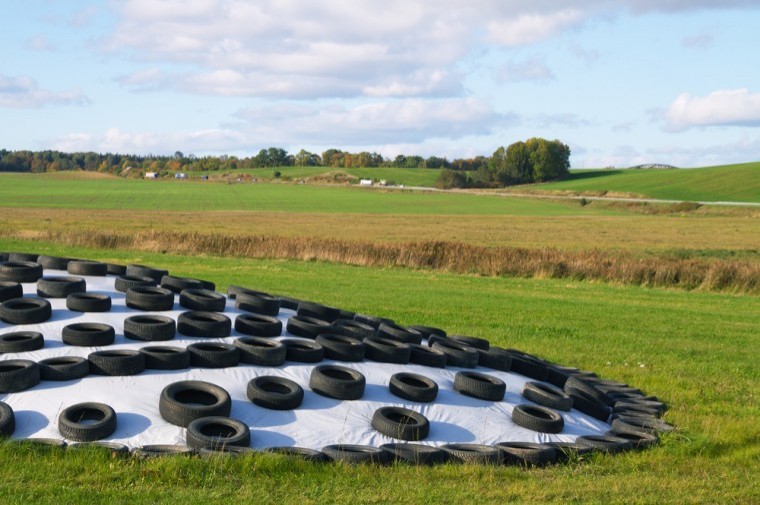According to recent research from Silostop at AgriScot, results, reported by Professor Mike Wilkinson, looked at a trial carried out at the INRA Research Centre in France, comparing two identical 120-tonne clamps of perennial ryegrass silage, and concluded that silage stored under an oxygen barrier film, has superior nutritional value than that stored under a sheet of standard polyethylene sheet with tyres.
Analysis was started after 240 days of storage and taken twice per week at 14 points on the exposed feed out faces of each silo. Significantly lower dry matter losses occurred in the oxygen barrier film (7%) compared to the singe plastic sheet (15.2%), as well as noticeable lower reductions in Butyric acid levels (17.2% compared to 7.35%). Much higher acetic levels were also found in the oxygen barrier film silage, testing out at an average of 15.9% compared to 6.26% in the plastic sheet silage.
This trial shows the significant differences that can be incurred depending on clamp management,” explains Jennifer Hitchman, technical manager, Silostop. “This can have significant financial implications and a negative impact on herd performance.
“Farmers invest huge amounts of time and energy into producing nutritious forage for their livestock enterprises, and this investment needs protecting when it comes to storage,” she adds. “That level of attention should be also seen in the clamp management; often a small change in sealing the clamp can result in huge differences in silage quality and therefore nutritional value.
“We all know the basic need to avoid oxygen entering the silage, and so to protect the ensiled clamp, which is a large financial asset to the business, farmers should consider the most effective barrier available to them.
“Often, farmers focus on reducing costs to maximise returns, and dry matter losses should be accepted as a ‘cost’ to the business,” she adds. “However, with some small adjustments to clamp management, that cost can be greatly reduced, with the added benefit of eliminating any health and performance issues that arise from feeding poorer quality,” Jennifer concludes.




